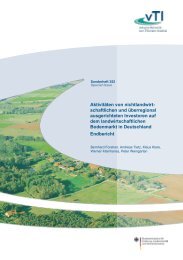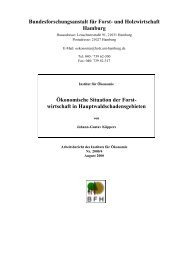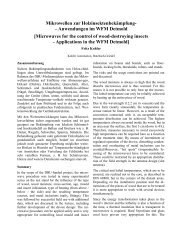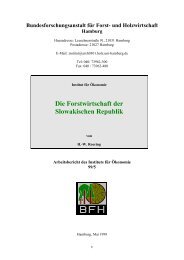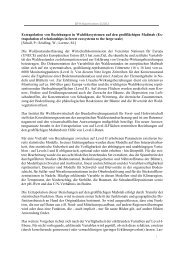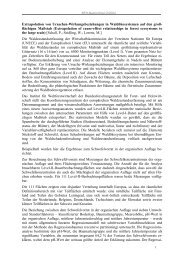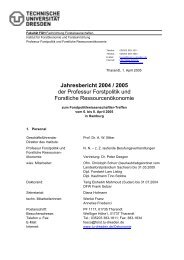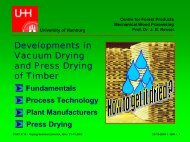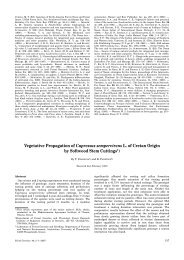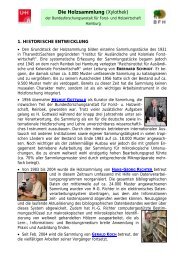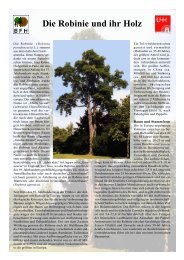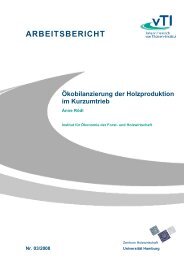STATE OF THE ART REVIEWS
STATE OF THE ART REVIEWS
STATE OF THE ART REVIEWS
You also want an ePaper? Increase the reach of your titles
YUMPU automatically turns print PDFs into web optimized ePapers that Google loves.
COST ACTION E22: Environmental optimisation of wood protection<br />
2. RESEARCH ACTIVITIES BY WORKING GROUPS<br />
Only the scientists working at the Faculty of Forestry in Zagreb are engaged in scientific<br />
and research work relating to wood preservation. As Institute za drvo (the Institute<br />
for Wood Technology) stopped its work in 1989, and the chemical industry in Croatia<br />
has been stagnant, as far as research is concerned, for quite a long time, the only<br />
research has been conducted at the Faculty of Forestry:<br />
• the Institute for Wood Science,<br />
• the Institute for Forest Protection and Wildlife management<br />
Working Group 1: PERFORMANCE<br />
Scope: Traditional wood preservatives, specifying durability requirements, optimum<br />
bio-effective life, creosote, field performance using soil, insects in Europe, climatic<br />
conditions.<br />
Classifying hazard including risk mapping<br />
• decay processes and mechanisms<br />
• diagnosis of damage to wood structures (biotic and abiotic)<br />
• insect population ecology<br />
Efficacy prediction (relationship between testing and practice)<br />
• surface properties and protection of Fir-wood joinery (L-joints method)<br />
Improved protection with minimum use of preservative chemicals<br />
• impact of wood structure and natural durability to the wood properties, particularly<br />
wood protection<br />
Maximum protection with minimum use of preservative chemicals<br />
• improvement of Fir-wood permeability caused by bacteria<br />
• impact of wood structure and natural durability to the wood properties, particularly<br />
wood protection<br />
Scientific basis for realistic, end-use predictive tests<br />
• surface properties and protection of Fir-wood joinery (L-joints method)<br />
Working Group 2: IMPACTS<br />
Scope: Risk assessment, optimum bio-effective life, remediation and wood wastes<br />
Implementing remediation technologies<br />
• remedial treatment of wood with inert gasses<br />
33



